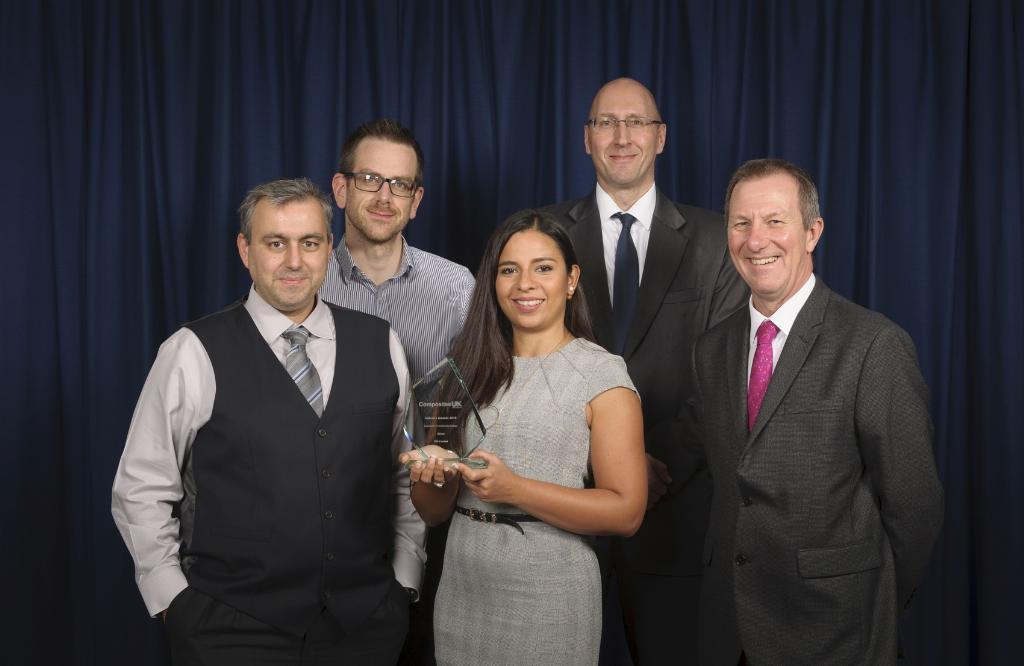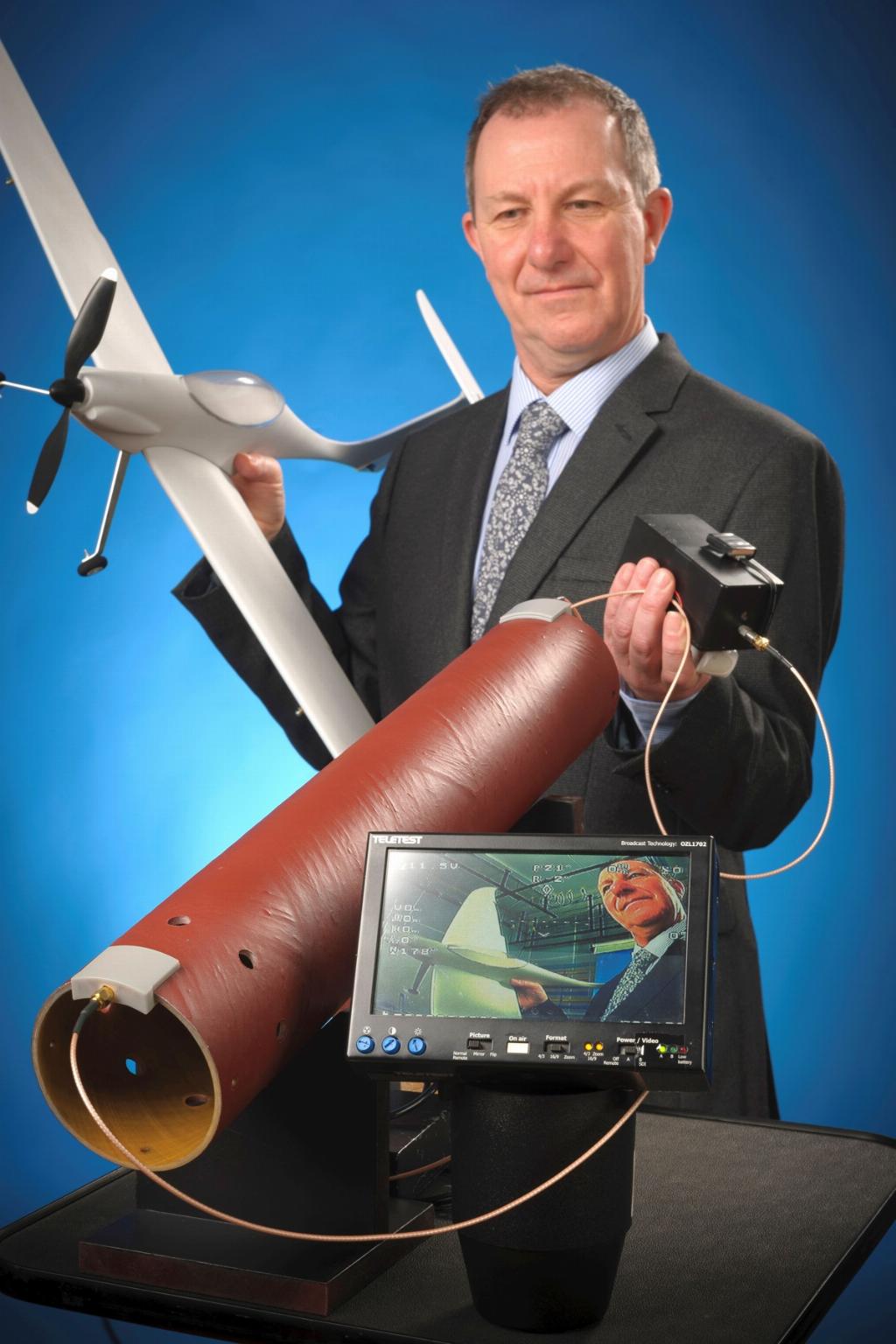Who needs wires?

Aircraft cabling is heavy, expensive and often faulty, but TWI’s SurFlow system may soon make it largely unnecessary. Ian Parker reports.
Sending messages along things which have another main purpose has a lengthy history. Stranded sailors of old would put a message in a bottle and fling it into the sea. Not long after the railways were built, operators started sending telegraph messages along the rails. Power companies have used their high voltage lines for communications. Now it’s the turn of composite structures.
Wiring looms in aircraft are expensive, difficult to make and install, and can often contain faults which can be very difficult to find. Mistakes can be expensive. Remember the wiring problems which plagued Airbus A380 production before its first delivery? But, the increasing use of composites in aircraft could take all that away because composite structures can carry signals just like wires. It’s a real serendipity - and the UK’s TWI has perfected and patented the technology.
Radio communications employ three kinds of waves - free, sky and ground waves, and it’s the latter which interest us here. Known in the 19th century and alternatively called Norton, Zenneck or Sommerfield waves, they hug the Earth’s surface and allow over-the-horizon communications. The waves follow the contour of the Earth because they induce currents in it and this slows the wave in contact with the surface, causing it to bend.
Unexpectedly, composites can be made to do the same thing. With a conductive/metallic (often aluminium) layer on one side and a dielectric/resin layer on the other, transducers embedded within or in close proximity to this layer can communicate with each other by signals which travel within it. They do not need to be connected by wires. How was this discovery made?
The MoD need for advanced secure technologies and Roke Manor development of surface wave technology electronics produced the impetus for development of composite structures that can securely carry surface waves. TWI took the challenge on board with their expertise in composites and materials, and successfully demonstrated surface wave propagation in composites. TWI filed a patent application on the composite materials which was granted in the UK in 2016 and in the US last October.

It’s all taking shape
It doesn’t matter what the fibre is - it can be glass, carbon, aramid or a combination - but the matrix is usually epoxy because it is most commonly employed in aircraft primary structures.
“We’d been playing with different shapes, different power levels and different frequencies and I built the electronics at home using 5.8 GHz to transmit a video signal,” states TWI’s defence programme manager, Paul Burling. “Higher frequencies can be more challenging and definitely more expensive. We went down the low-cost route using commercial, off-the-shelf electronics.”
TWI is using between 2 and 6GHz which is able to manipulate a mechanical hand. A TWI video shows the control surfaces of a model aircraft being moved by a SurFlow system. On an aircraft, the technology could eliminate up to 75% of the wiring, says TWI. It also allows the electronics to be placed anywhere in the aircraft because no thought has to be given to routing wiring. The bit rate is high - up to 6Gbps - but normally 3Gbps. This is about three times as fast as a Cat5e ethernet cable.
The technology is most suited for 6th generation fighters in 5-10 years and possibly for simplification of drones. It is expected to move into commercial airliners somewhat later, once the technology has been proven, but the benefits there could be huge.
Passenger aircraft are becoming more sophisticated and manufacturers are having trouble keeping up with demand as air travel becomes increasingly popular. Imagine the savings in time and money not having to install a wiring loom. Production delays in finding faults in a wring loom can be significant as cables can be inadvertently shorted or broken. Burling says he has travelled all over Europe and North America, making presentations to potential users of SurFlow, many of which are aerospace companies.
TWI’s current champion of the technology is Dr Jasmin Stein, a senior project leader (composites) in TWI’s Adhesives, Composites and Sealants Joining Group.

“Using SurFlow doesn’t affect the structural integrity of the composite at all,” she explains. “On an aircraft, we need a conductive layer on the composite anyway for lighting strike protection. It doesn’t change anything in the composite make up. Also, the signal is very secure. It cannot be intercepted.”
It eliminates the risks associated with Wi-Fi and Bluetooth and any other broadcast system. Last October, Dr Stein collected an award from the Composites UK trade association for innovation in composite design.
Go with the flow
The system is also damage tolerant. If there is damage in the composite, the SurFlow signal just flows around it - a bit like waves flowing round a rock in the sea. Also, the signal can be used to detect the existence of damage in any composite structure being used for transmission.
People often question the cost of developing military technology, such as stealth aircraft, but here’s an example of where a spin-off could be of great value to aerospace, as well as other industries, including automotive, robotics and consumer electronics.
Eliminating wiring could save huge amounts of time, money and weight. It’s often nature’s way to use one thing for many purposes and now composite technologists are following suit. It’s an example of how cross-fertilisation can occur when engineers communicate and think outside the box.








